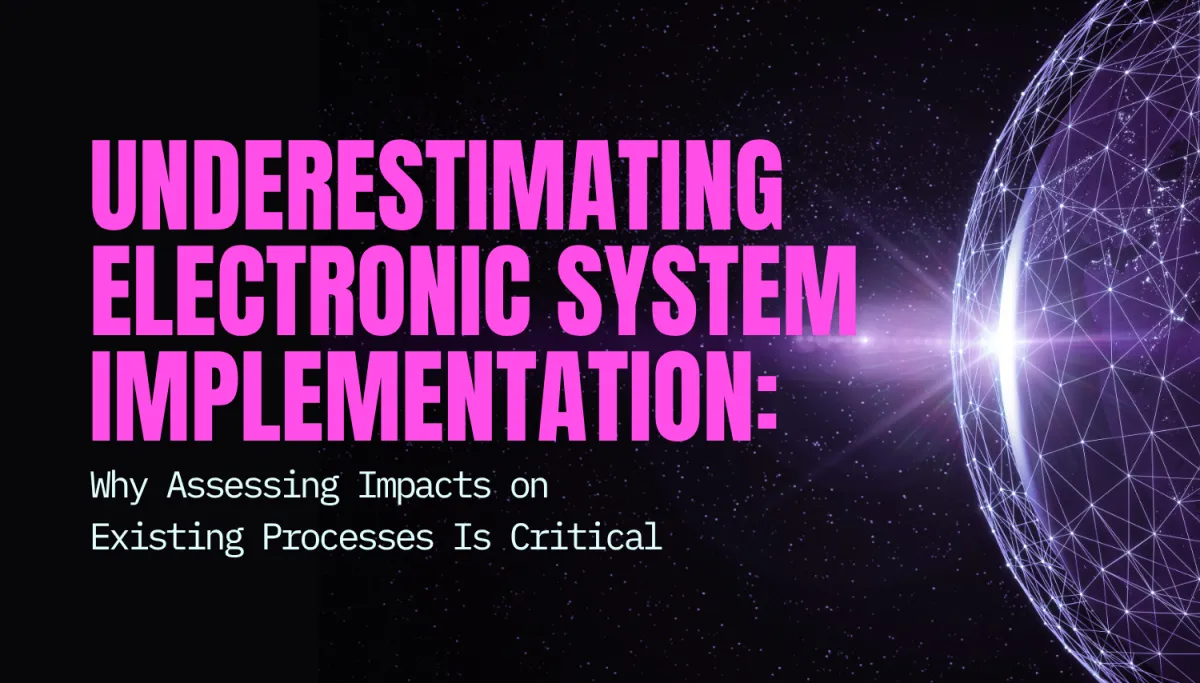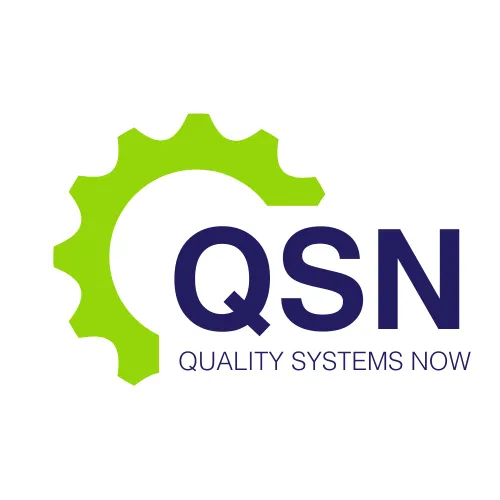LATEST NEWS

Underestimating Electronic System Implementation: Why Assessing Impacts on Existing Processes Is Critical
Organisations are increasingly adopting electronic systems—such as electronic Quality Management Systems (eQMS), Laboratory Information Management Systems (LIMS), and electronic batch records—to improve efficiency, traceability, and compliance outcomes. However, at Quality Systems Now, we have consistently observed that one critical area is frequently underestimated: the impact of these new systems on existing processes, procedures, and workflows.
This article will explore the scientific and operational implications of implementing electronic systems in regulated environments. We focus specifically on how failure to adequately assess and prepare for workflow changes can lead to compliance gaps, process inefficiencies, and long-term resource strain. Our intent is to provide therapeutic goods manufacturers, testing laboratories, and biotechnology companies with a practical and risk-based framework for managing this transition successfully.
The Digital Shift in Compliance
The shift from paper-based to electronic systems in GMP environments is driven by a desire for greater data integrity, better audit readiness, and faster decision-making. Systems such as eQMS and electronic Document Management Systems (eDMS) allow for automation of document control, deviation handling, CAPA tracking, training, and risk management.
While the advantages are clear, the complexity of system implementation is often underestimated. Unlike legacy paper processes, electronic systems enforce structured data input, workflow standardisation, and automated approvals. These features, while beneficial, fundamentally alter how work gets done.
Why Workflow Impact Is Often Overlooked
Organisations often prioritise system functionality, vendor selection, and validation activities—while assuming existing Standard Operating Procedures (SOPs) and business processes can be “plugged into” the new system with minimal change. This assumption is flawed for several reasons:
Electronic systems rarely replicate existing paper-based processes one-to-one.
Role assignments, approval chains, and notification systems often need to be redefined.
Legacy workarounds and manual interventions are removed, requiring formalised processes.
Users may face learning curves and usability issues that delay adoption.
Regulatory documentation must be updated to reflect the new system-based operations.
The result is often non-compliance, user frustration, and costly delays in realising the benefits of the system.
The Scientific and Compliance Risks of Poor Impact Assessment
In GMP-regulated industries, failure to assess the impact of electronic system implementation on current processes introduces specific risks:
Data Integrity Failures
Incomplete mapping of legacy workflows to electronic processes can result in untracked records, missing metadata, or improperly configured audit trails. This undermines ALCOA+ principles and may result in regulatory findings.
Inadequate Change Control
Changes to procedures and systems must follow documented change control processes. Poorly managed transitions may violate change control policies or leave legacy SOPs in place that no longer reflect actual practice.
Misaligned Roles and Responsibilities
Electronic systems often enforce specific user roles, yet organisations may not update their procedures or training matrices accordingly. This can lead to unauthorised actions, delayed approvals, or gaps in accountability.
Prolonged System Validation
Unforeseen impacts on business processes can extend the Computer System Validation (CSV) timeline, requiring additional rounds of testing, documentation updates, and stakeholder approvals.
A Risk-Based Framework for Impact Assessment
At Quality Systems Now, we recommend a structured and risk-based approach to determine the impacts of electronic systems on your current operations. The following five-step framework can be used across regulated environments:
1. Process Mapping
Start with end-to-end process mapping of current workflows. Identify all inputs, decision points, outputs, and handovers. Use tools like SIPOC (Suppliers, Inputs, Processes, Outputs, Customers) or swimlane diagrams to visualise cross-functional dependencies.
2. Gap Analysis
Perform a gap analysis between existing workflows and the capabilities or requirements of the new electronic system. This includes:
User access and role hierarchy
Approval and notification workflows
Document lifecycle processes
Data input and output formats
Regulatory reporting triggers
3. Stakeholder Impact Assessment
Engage users from QA, QC, production, regulatory affairs, and IT to identify practical challenges in adapting to the new workflows. Understand where delays, resistance, or workarounds may arise.
4. SOP and Training Review
Evaluate which SOPs, Work Instructions, and training materials will be affected. Prioritise updates based on criticality and compliance impact. Ensure training reflects not only system use, but also procedural changes.
5. Change Control and Validation Planning
Develop a robust change control package that includes procedural updates, system configuration, and validation documentation. Plan for contingency resources to handle unexpected workflow misalignments during rollout.
Real-World Examples of Impact Oversights
To illustrate the criticality of workflow impact assessments, consider the following anonymised case studies from industry:
Case Study 1: Deviation Workflow Failure
A biotechnology firm implemented an eQMS to manage deviations. However, their SOPs still referenced manual deviation logbooks and email-based approvals. During a TGA audit, it was discovered that deviations were not consistently entered into the system, and root cause analysis was bypassed. The company received a critical finding and had to suspend product release until procedural alignment was achieved.
Case Study 2: Delayed Batch Release
A contract manufacturing organisation adopted an electronic batch record system. The new system required QA release signatures to be entered digitally, yet QA procedures still referenced physical batch folders. Due to uncertainty, release was delayed on multiple lots, affecting customer delivery timelines and prompting internal investigations.
Both examples highlight that even when systems are validated and functional, process misalignment introduces real compliance risks and operational bottlenecks.
Time and Resource Considerations
Organisations must allocate realistic time and human resources for process and procedure updates during system implementation. Our experience suggests that for every major electronic system introduced, organisations should plan for:
20–30% of total project time allocated to process impact analysis and SOP updates
Active involvement of cross-functional SMEs for process design workshops
Pilot testing of updated workflows in the system to uncover friction points
Post-implementation monitoring to validate process performance and user compliance
This investment significantly reduces the risk of compliance issues and accelerates return on investment.
Recommendations for Success
Based on extensive industry experience, Quality Systems Now recommends the following best practices for managing the impact of electronic systems on your operations:
Start impact analysis early—at the requirements gathering stage, not post-deployment
Document all deviations from existing procedures and determine whether to adapt the process or configure the system
Involve end users in UAT and workflow simulations to gather real-world feedback
Create a dedicated change management team that includes quality and regulatory leads
Plan for phased rollout where possible, especially for systems affecting multiple functions
Ultimately, your goal should be not just a validated system, but a fully integrated, compliant, and efficient operational model.
Conclusion
Implementing electronic systems in GMP environments offers significant long-term benefits. However, these benefits are only realised when organisations fully understand and address the impacts on existing processes, procedures, and systems. Underestimating this step leads to compliance risks, inefficiencies, and costly rework.
At Quality Systems Now, we specialise in guiding companies through this transition with a scientifically grounded, risk-based methodology. By investing in comprehensive impact assessments and procedural alignment, you can unlock the full potential of digital compliance—while maintaining regulatory confidence and operational integrity.
